Santa Fe is now called the City Different. It has become commercialized, socialized, sophisticated. It has changed considerably in 70 years, and is certainly a city different from the Magical City of Holy Faith that Verna wrote of in her essay below. Some of that quaint old charm is gone…
Still, if you look and listen with your heart …
Pinon wood-smoke will always be the quintessential scent of Santa Fe. The delicious smell of pinon wafts down the winding streets, even in summer. Donkeys bray, burdened with cords of wood as they stand impatiently in Burro Alley; booted heels clunk on boardwalks and spurs clink; horses pulling wagons loaded with goods for the marketplace whinny; Indians, with their poetic-sounding dialects, converse with each other; the melodious church bells chime. These are the sounds of Santa Fe, some of them now gone except in memory. Sunlit adobe walls, splashed with the brilliant colors of green and red chile ristras, quaint wooden doors painted blue, green and turquoise; the sparkle of polished silver nesting stones of turquoise, coral and mother-of-pearl shell displayed on multi-colored serapes and Indian blankets woven with bright colored woolen yarn. These are the colors of Santa Fe.
Some of these sensory essences will always remain an integral part of Santa Fe. To evoke the ones now gone, listen with your heart.
PINONS
by Verna Laumbach
Out of the emptiness of evening air
from streets where dead leaves sighed of coming frost,
I came into rooms sweet with pinons, where
old memories rushed back, once nearly lost.
I saw again a dim cathedral filled
with incense of pinons, where tired souls
found rest, and quaint adobe homes where skilled
brown hands turned pinons over open coals,
and there were children looking on, with names
long forgotten, but eager as the flames.
I traveled back to woods that once I knew
at home, where pinons fell, ungathered, free,
on carpets of soft needles, where winds blew
and stirred a fragrance old as memory.
The above poem and the below essay inspired the creation of the other.
Like the poem, the essay was written by Verna Laumbach, born in 1909, as a class assignment when she was a college student at what was then named New Mexico Normal University, in Las Vegas, New Mexico. These pieces were written about 1933. She made many pilgrimages to Santa Fe then to visit her aunt and uncle, the Candelarios, Estefanita and Jesus Sito, who lived on Palace Street and established and owned the then-world renowned Original Old Curio Store (the rustic one with the carreta on top) on San Francisco Street off the Plaza.
SANTA FE: THE MAGICAL CITY OF HOLY FAITH
by Verna Laumbach
Ever since I can remember, I have made pilgrimages to the City of Holy Faith. In the beginning, it was to visit, in company of my parents, friends, and relatives who lived there. But since, I have gone there many times to renew the breathless wonder that belongs to childhood and fairy books — and pilgrims.
It is easy to let your imagination run riot in Santa Fe. It is easy to feel, the moment you step into its winding streets, that you are entering a magic land and some new strange adventure. The city is a paradox, for though its ancient spirit never changes, it forever holds something new. No matter how dull and tired one may be from travel, the sight of Santa Fe inspires new faith and hope.
On the Santa Fe Trail, it has given inspiration for ages. It was a beckoning goal in caravan days. The danger and hardship of weary miles did not prevent the caravans from coming repeatedly, for always there was Santa Fe at the end of the Trail. In the days of conquest, it was built and named as the center of a new civilization and religion; it was the Jerusalem for pilgrims in a new, grim land. For those pathfinders, it never failed. It kept faith burning in a hostile time, when faith was all there was, and when that faith was nearly destroyed by rebellion.
As Santa Fe was then the center of the vast Territory, it is the geographical center of New Mexico today. Even now it has not failed us. The traveler is lured by the same magic that beckoned long ago. Santa Fe is so very, very old. Even the nearby hills are wrinkled and scarred. Many of the adobe houses and buildings have the mellowness of centuries clinging to them — including the old Museum, the San Miguel Church and the Oldest House. This mellowness, like a veil, half conceals the scars of time and half reveals the enchantment beneath. A casual eye might miss it altogether, only imagination can lift the veil. It hangs even above the narrow crooked streets that sometimes lead abruptly to nowhere.
It is possible to get lost in reverie wandering through the rooms of the Old Museum. Those adobe rooms have held a variety of experiences. They are cool and remote as a calm old spirit untouched by trivial things. You should not hurry through those rooms, for too many centuries reside within the relics there. In them are revealed great vistas of history, struggle and bravery, and I feel in the background, somewhere, hovers the presence of many dead but heroic years.
It is easy to think of Santa Fe as the City of Holy Faith. Even in its winding streets one can sometimes catch the fragrance of burning pinon, like incense of some dim old church. If the city were taken symbolically, it could be imagined as a vast cathedral. Its narrow streets are aisles, with the sounding bells above them, and in them the strange spell lures new people every year, and also calls the old ones back again.
There have been many essays and poems written about this city. They have all tried to do it justice, and some have. May each new one serve as an added jewel to the rosary that is already long in praise of Santa Fe.
(Editor’s note — In reference to the above author’s uncle mentioned in introduction to the essay: For 75 years and more, much has been written about Jesus Sito Candelario, who lived in Santa Fe between 1864 and 1938. He was the famous proprietor of the Old Curio Store on San Francisco Street in Santa Fe. (He was adept and successful at self-proclaiming his fame, world-wide.) Many articles have been written about him in various publications, including fairly recently in the New Mexico Magazine, La Herencia and El Palacio. He was a humorist and a kidder, and — in his time — the greatest and most successful salesman in the southwest. U.S. presidents, vice-presidents and a Canadian minister were guests in his home.
A resurgence of interest in Sito Candelario began in 2000 because of an art show of his grandson, John S. Candelario, raised by Sito and Estefanita. The Museum of Santa Fe had a posthumous showing of John’s vintage photography — In His Native Land — that ran from September 15, 2000 through May 20, 2001.
For an in-depth view of Jesus Sito Candelario, the man and his history, seek the March 2000 issue of the New Mexico Magazine and read the article J.S. Candelario, Santa Fe’s Greatest Salesman, by Janet S. Girand.
The photographer of the following is JOANN HAZEL of Roswell. Her photography depicts Santa Fe in the new millennium, but the magical city of holy faith remains suspended in time and place. In Santa Fe, you will find interwoven the very old and the new.
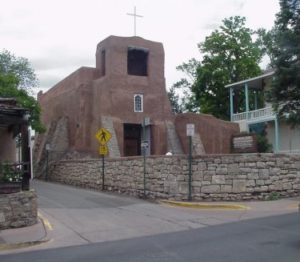
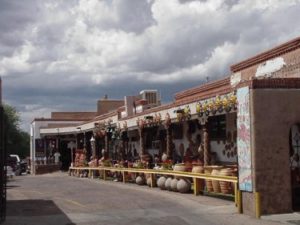
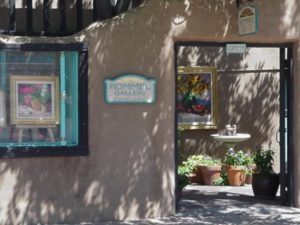
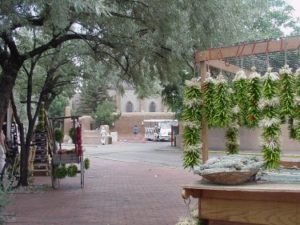
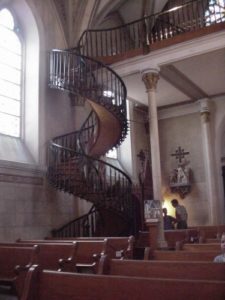
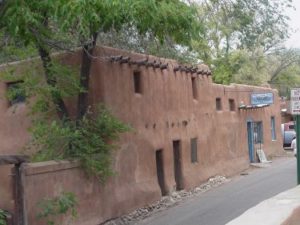
CONTINUING TO EXPLORE THE ORIGINS OF “BILLY THE KID” BONNEY

Pictured above is an old adobe Bonney abode, built in the 1800s, as it now looks at the beginning of the new millennium. It is on private property in northeastern New Mexico, and was the residence of Santiago (Hispanic for James) Bonney, the son of a blue-eyed Englishman named James Bonney. At least one historian thinks that James Bonney was a close relative of Billy “the Kid.”
Continuation of A Bonney Ballad by Jan Girand
So … who was our Henry McCarty, William H. Bonney, “The Kid?”
Where did he come from, who was his ma, why did he do what he did?
Of his latter years (alas, so few), we know his story well
for many, including Pat Garrett, his stories loved to tell.
His antics, shoot-outs, hot pursuits are documented well
in books, in movies and in songs, stretched out so they would sell.
And sell they did, even in England, for folks there love a tale —
of strife, romance and intrigue as they quaff their brew and ale.
***
… to be continued …
(To see earlier portions of this poem, click the Archives button and go to Byway pages of the previous issues.)
Pictured below is the Santiago Bonney Ditch as it appears today, more than 150 years after it was dug in northeast New Mexico by Englishman James Bonney in 1845 near his home and trading post along the Santa Fe Trail at a place then called La Junta, “the junction,” so-named because of the convergence of rivers.
In late summer of 1846, during their successful expedition in conquest of New Mexico and California for the U.S., Col. Stephen Watts Kearney and his Army of the West, and Col. Alexander W. Doniphan and his troops and caissons, camped at La Junta as guests of James Bonney, who supplied them his choicest beef. A few months later, Bonney was killed by Indians when he went in pursuit of them to retrieve his stolen horses. He went alone except for his young Indian guide, and took his wife’s fresh-baked tortillas for barter, which turned out to be a fatal mistake.
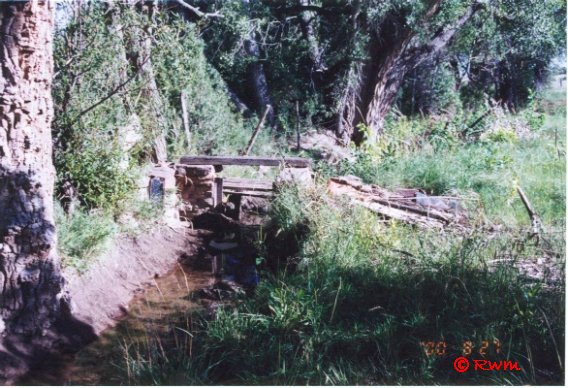
Santiago Bonney Ditch
The origins and genealogy of Billy “The Kid” Bonney and his early life remain a mystery. So too is the mystery of why he, in the latter portion of his short life, adopted the name Bonney. Most published historians think that: a.) He began life in New York as Henry McCarty; b.) He changed his name to William Henry Antrim to match his stepfather’s after his mother’s marriage in Santa Fe in 1873; and c.) He adopted the name William H. or Billy Bonney in the last years of his life. Historians don’t know from where he acquired or why he adopted the Bonney name. Serious historians admit that they are uncertain of his origins, but think he might have been born in a New York City Irish slum in 1859. Both the place and the date of his birth could be incorrect.
We will continue to explore the possibilities together in future issues.
Rwm
Send an Email to editor@roswellwebmag.com , giving your Email address and your mailing address, and we will mail this (below) collector postcard to you with a Roswell, New Mexico cancellation stamp.
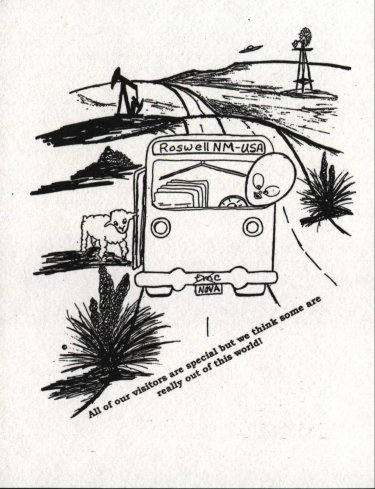
“All of our visitors are special, but we think some are really out of this world!”
Rwm
 Roswell Web Magazine
Roswell Web Magazine